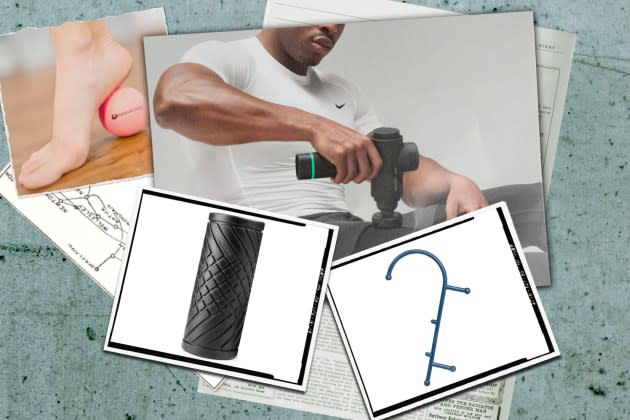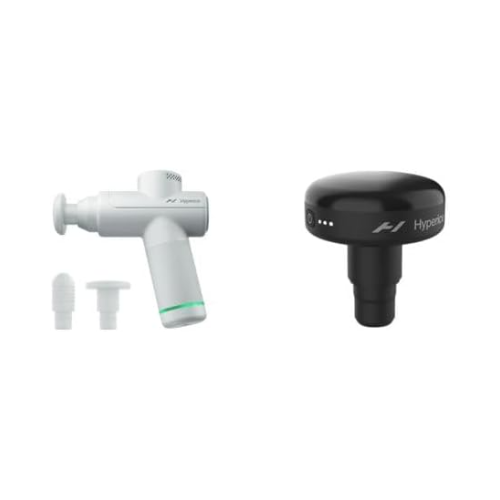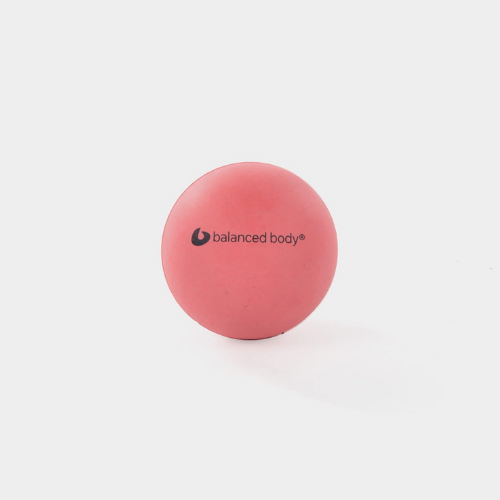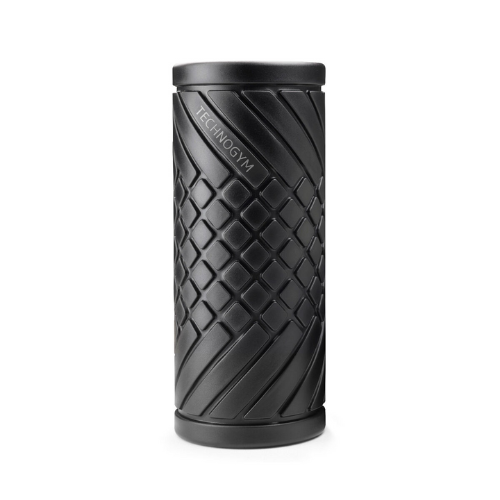The Best Self-Massage Tools, According to Physical Therapists

Our editors independently select the products we recommend. We may earn a commission on items bought through our links.
North of 30, being physically sore is as much a part of the human condition as having hopes and dreams. Cricks in the neck come from poor pillows in addition to long runs, and everything from the wrong pair of shoes to a long plane ride causes muscle soreness. Stretching is key, but the best self-massage tools can help work through knots and pain points at home, on your own schedule.
Today's Top Deals
“DIY massage is convenient, low-cost, and provides an effective way to be consistent. This consistency can compound over time and lead to many long-term benefits,” says Lindy Royer, physical therapist and Balanced Body educator.
Self-massage tools exist for every kind of body and every kind of sore. Massage balls and foam rollers have been around forever because they’re tried-and-true, while more modern powered percussive massagers have skyrocketed in popularity for their ease of use, powerful pulses and consistency. Unsurprisingly, the former simple tools are much more accessible in price, topping out at around $75. On the other hand, the best massage guns, which necessarily have to be unimpeachably safe for consumers, cost around $275, but there are completely functional options starting at around $150.
What the Experts Say
SPY spoke with physical therapists, massage therapists, sports science experts, and other massage professionals to understand how the best self-massage tools work, including Dr. Cara Dobbertin, a physical therapist (PT) and doctor of physical therapy (DPT) with Practitioner; John Gallucci, Jr., PT, DPT; physical therapists Jasmine Marcus, Lindy Royer and Michael Last; CG Funk, chief therapeutic experience officer for Massage Heights; Matthew Perry, training & development manager at The NOW Massage; and Dr. Julia Morgan, Hyperice performance advisor and sports chiropractor.
The experts broadly say the best self-massage tools are a convenient, if not strictly necessary, way to achieve muscle relaxation and temporary pain relief. “You can do self-massage techniques pretty much anywhere including your home, office, or even your car,” says Funk. “Results can be felt quickly or immediate relief provided when you focus on your problem areas.”
Second, self-massage tools don’t need to break the bank or rely on power to be effective. Multiple experts recommended manual tools, like massage balls, foam rollers, and cane massagers, because they’re simple, they work, never need a charge, and last.
At the same time, they noted the risks of injury for people who use self-massage tools improperly or too aggressively. “A good massage tool should make you feel good. This sounds self-explanatory, but many people think that they should be in pain when using these tools and that is not true,” Marcus says. “If you’re overly aggressive with these tools, you can exacerbate a problem and/or cause bruising or skin damage.”
Lastly, self-massage tools aren’t the end-all be-all, experts say. They can’t replace or substitute for proper medical treatment and chronic issues are best evaluated by a professional. “As with any intervention, it is important to discuss with your healthcare provider or physical therapist before use, especially if you have preexisting conditions or are recovering from an injury,” Dobbertin says.
The Best Self-Massage Tools

BEST OVERALL – ELECTRIC
Theragun Elite
Buy Now On Amazon
Though this may not come as a surprise, the Theragun Elite Massage Gun (4th Gen) is a hands-down, easy pick for the best powered self-massage tool. Its percussive massage takes the effort out of targeting and busting up knotty muscles while remaining quiet.
“For a powered tool, I like the Theragun Elite,” Dobbertin says. “It provides multiple attachments and a higher performance than some of the other models without being at the highest price point.”
The piston movement and pulsating pressure of massage guns like this soften muscles, relieve tension, and promote circulation, Perry says, adding, “It’s great for post-workout recovery.”
Plus, men who really want to perfect their self-massage routine will appreciate the customizable presets via the accompanying app and the attachments for more precise targeting and intensity — less experienced massagers should steer clear of the cone to start.

BEST OVERALL – MANUAL
Hypervolt Go 2 Massage Gun
Buy Now On Amazon
Use It For: Everything a Theragun could target, including the arms, legs, and back.
ROI: At just under $180, the Hypervolt Go 2 Massage Gun costs around $100 less than comparable Theraguns but delivers similar results in a smaller package. Notably, this gun also includes a heated head attachment to further soothe sore muscles.
Hot Take: Morgan says, “I personally love the Hypervolt Go 2 as it’s portable, easy to hold, and packs a good punch even though [it’s] the smaller version. Plus the interchangeable heads allow me to use it pretty much anywhere on my body.”
Last adds that he usually sticks to a manual self-massage tool like a foam roller but that the Hypervolt Go 2 is useful for spot-specific areas that other exercises and equipment can’t effectively target.

BEST MASSAGE BALL
Balance Body Pinky Ball – Small Massage Ball
Buy Now
Use It For: Targeting any place that can benefit from gentle rolling, but especially places where other tools won’t be as effective, like the arch of the foot, which can help with plantar fasciitis. Perry says that small massage balls can also roll the neck and back (with a little wall assist), glutes, and any tight muscles.
ROI: The Balanced Body Pinky Ball is as cheap as it gets at $5 on the nose. Made from PVC, it’ll get gross long before it starts to break down.
Hot Take: Royer says she’s a big fan of “uncomplicated manual tools,” adding, “The Pinky Ball by Balanced Body is portable, light, and can be used easily for most areas of the body from the feet to the shoulders.”

BEST FOAM ROLLER
Technogym Foam Roller
Buy Now
Use It For: Stretching and recovery for backs and legs mostly. It’s harder to use foam rollers on the arms and other parts of the body due to their shape.
ROI: The Technogym Foam Roller is on the pricier end of the spectrum at $85, so it’s not for everyone. But it costs that much because Technogym, an equipment manufacturer that’s supplied multiple Olympics, makes everything of top-notch quality. The roller gets less firm toward the edges and includes a textured, grooved pattern for extra deep massage.
Hot Take: Funk says, “I personally love Technogym’s foam roller. It’s professionally made and easy to use to stretch muscles and connective tissue as well as alleviate muscle pain from overuse or injury.”
Frequently Asked Questions About Self-Massage Tools
How do the best self-massage tools work to relieve muscle pain?
Self-massage tools like foam rollers, massage balls, and percussive massage guns use targeted pressure to relax muscles and relieve tension. Royer explains that this allows users to lessen or intensify pressure based on their pain level, which “allows for tissue mobilization, relaxation, and other pain-reducing benefits.”
Funk adds, “The pressure and movement you apply will stretch and loosen tight muscles, and increase local blood circulation, both of which bring relief.”
What features should I look for in a self-massage tool?
This depends somewhat on whether an electric or manual tool suits your needs, but general buying principles apply: Look for something sturdy and ergonomic with design features suited to the particular area in need of relief, Dobbertin says.
For powered self-massage tools, Morgan mentions portability, a decent battery life, and sufficient power so the tool does the massage work. “For a good powered self-massage tool, you want the tool to be powerful enough that you don’t have to push into the muscle,” she says.
What are the pros and cons of manual tools vs powered tools?
Manual tools are generally cheaper, safer and offer more control while powered tools deliver a lot more power, efficiency, and consistency at a higher cost. There’s an increased risk, however, to more power, and one should be familiar with what one needs before arming oneself with one.
“Manual tools are more controllable and offer a gentler approach,” Funk says. “Mechanical tools can penetrate muscles in a deeper way through their percussive movements, but can also cause more discomfort when using, especially to areas that are more restricted and in a deeper cycle of pain.”
Morgan adds that some manual tools also have more of a learning curve, which might make them less suitable for newbie self-massagers. The bottom line? “The choice boils down to personal preference and specific therapeutic goals,” Dobbertin says.
What does using self-massage tools actually do to muscles to produce relief?
Moving, and building, muscles over time can lead to so-called trigger points that can cause knots and scar tissue to develop which is what self-massage tools target.
Gallucci, Jr. says, “When the modality of massage is applied to muscles, especially in tender areas that contain trigger points, the movement of the muscle tissue actually releases areas of tightness (whether tender to the individual or not), breaking up adhesions, increasing flexibility of the area and ultimately improving the function of the muscle.”A
Are there any risks in using a self-massage tool?
Yes. Multiple experts expressed concerns about potential injuries among less experienced users of self-massage tools. The best indicator that something is wrong is pain; the experts stressed that pain, especially anything acute, is not supposed to occur using these tools.
“The biggest risks come with not using the tool correctly, applying too much pressure, and using a tool in an area it wasn’t designed for,” Funk says. “It’s best to practice with the tool lightly in the beginning, and use only as directed.”
For anyone unsure, Morgan has a good rule of thumb: “More intensity is not always better here! If you start holding your breath at any point, [the massage] is too intense and not benefitting you any longer.”
Proceed to Check Out…
More Top Deals from SPY
Best of SPY

